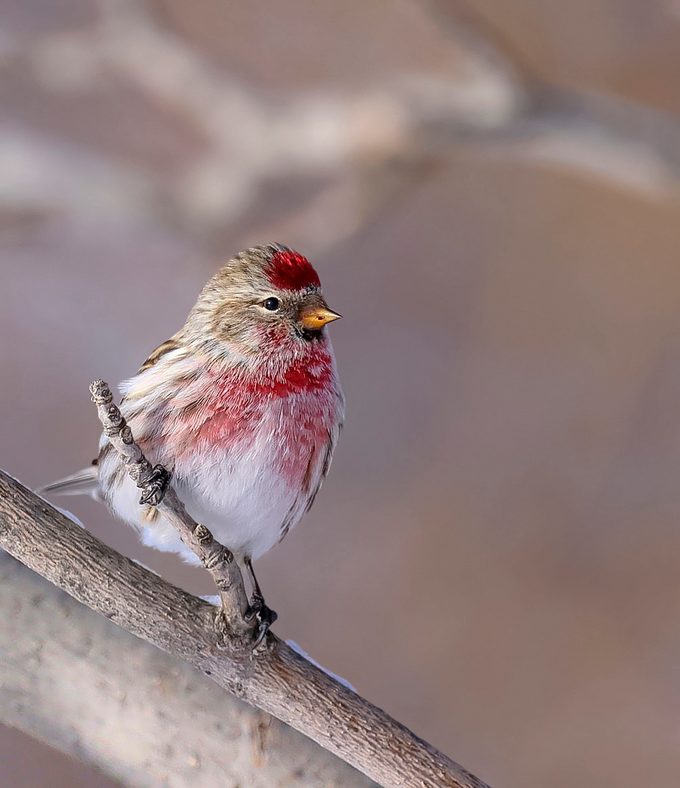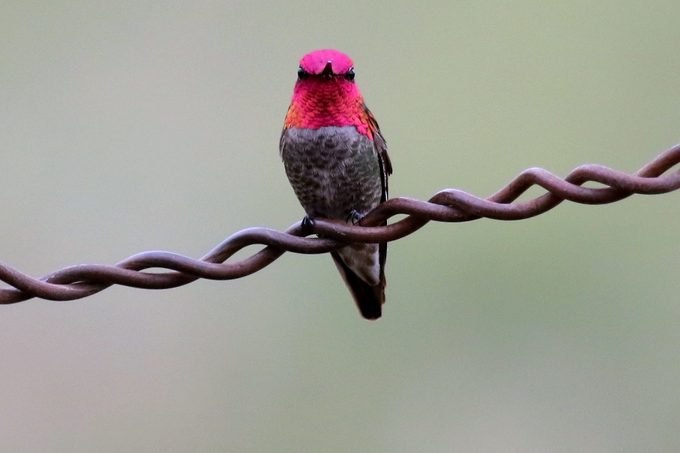Grab Your Binoculars and Join the Great Backyard Bird Count
Updated: Jan. 27, 2023
Connect with nature by participating in the season's most anticipated event: The Great Backyard Bird Count. It's easy to join, even if you're a new birder.

True to the scientific method, the Great Backyard Bird Count started out of curiosity. Researchers at the National Audubon Society and the Cornell Lab of Ornithology had an observation and a question.
The observation: Scientists could better understand, monitor and protect global bird populations with access to real-time information. The question: Would backyard birding enthusiasts be interested in counting birds and reporting their results online?
The community responded with a resounding yes, and the Great Backyard Bird Count (GBBC) subsequently launched in 1998. It was the first online citizen-science project to collect data on wild birds and display results almost instantaneously. Participants record sightings of both rare and common birds such as northern cardinals or mourning doves. This successful worldwide initiative connects people through birding.
“It even fueled the creation of eBird, which is one of the world’s largest citizen-science projects related to birds,” says Becca Rodomsky-Bish, project leader for the Great Backyard Bird Count. “And eBird is a very powerful conservation tool.”
Follow these birdwatching tips for beginners: Here’s how to start birding.
Great Backyard Bird Count Basics

The premise is simple. Birders across the globe come together to watch, count, study and celebrate birds. It’s held every February, for four days during Presidents’ Day weekend in the United States. See the Great Backyard Bird Count’s website to find out this year’s dates.
To participate, birders are asked to watch and count birds at least once during the event. While watching, they record any information they see or hear. Then they submit their findings using the Merlin Bird ID app, eBird Mobile app, or eBird website. That’s it!
“It’s a good fit for entry-level and less experienced bird-watchers because of the fact that you only have to bird for 15 minutes, and you can do it anywhere you choose,” says Kathy Dale, Audubon’s community science team leader.
Psst—before you get started, make sure you have binoculars and a bird field guide.
Research Has a Global Impact

This real-time research, provides undergraduate students, professional researchers and the general public access to decades of reporting.
“There are a lot of questions people can ask and find answers to when using this data,” Becca says. “Questions like ‘What birds are we seeing? Are birds that are normally found farther south being found farther north? Is that linked to climate change? What are we seeing in terms of feeding behaviors? Where are birds migrating, or not migrating, to?’’
Discover 15 common backyard birds you should know.
Get Your Friends and Family Involved
Some people choose to bird solo. But the Great Backyard Bird Count provides several opportunities for families, schools and home-schoolers, Scout groups and Audubon Nature Center visitors to band together for the good of birds everywhere.
“I love citizen science and being able to do something in my own backyard that contributes to something bigger,” says participant Megan Long, a naturalist at Oxbow Park & Zollman Zoo in Minnesota.
Megan has enjoyed watching birds with co-workers, her parents and even her youngest relatives in the four years she’s participated in the GBBC. Once, her 5-year-old nephew proudly taught her patience when he started his birding session by kicking off his shoes, putting his feet on the windowsill and exclaiming, “Well, sometimes you just have to wait!” Here’s how to get kids excited about birding.
“What you observe might be something small and simple on your end, but when you have so many people contributing, it creates a bigger picture of not only what’s happening in your state, but globally,” Megan says.
“The global nature of GBBC is really important because birds don’t pay attention to geopolitical boundaries,” Kathy says. “Being able to see people across the globe excited about what they are seeing in their area is really fascinating.”
Psst—check out the bird-watching gear you didn’t know you needed.
Increasing Interest During the Pandemic
As COVID-19 forced people indoors, birders flocked to the GBBC. “The momentum really built,” says Kerrie Wilcox, Canadian coordinator for the Great Backyard Bird Count on behalf of Birds Canada, which joined the event in 2009. From 14,300 global checklists completed in 1998 to more than 330,000 in 2020, the program supported people through the isolation and lockdowns of COVID-19.
“Birding is so good for people’s mental health,” Kerrie says. “It gives you a connection to nature that has proved helpful over the past year.”
In 2021, reports came from more than 190 countries, and checklists from Canada surged 109%.
Go birding in the city: Find out how to be an urban birder.
Fun Great Backyard Bird Count Facts

- One of the largest flocks observed in 2021 was a mix of more than 3,000 Ross’s geese and snow geese spotted south of Sacramento.
- In 2021, participants at Florida’s Dry Tortugas National Park witnessed 1,000 sooty terns, a seabird that wanders tropical oceans and nests on remote islands.
- Accidentally introduced to Florida in the 1980s, the eurasian collared dove has expanded its range to more than 39 states and into Canada, GBBC data shows.
- GBBC data supports evidence of the Anna’s hummingbird expanding its wintering range from desert scrub and the suburban yards of Pacific states into British Columbia.
- Quebec birders spotted more than 700 common redpolls in one flock in 2021, due to poor seed and cone production in boreal forests farther north.
Next, learn about the Christmas bird count, and World Migratory Bird Day, too.




















